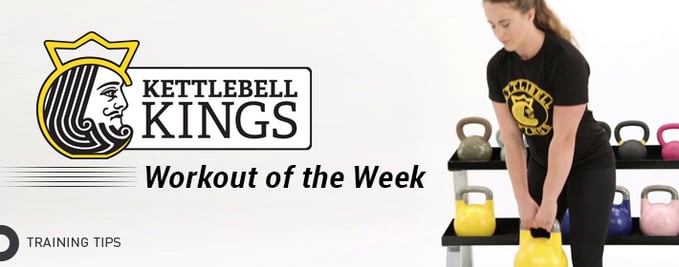Essential Kettlebell Exercises: Hardstyle Deadlift

Zogics is proud to have added Kettlebell King's line of premium kettlebells to our wide selection of fitness equipment. As Kettlebell Kings is our premier provider of kettlebells, we are sharing a weekly workout to learn all of the essential kettlebell exercises. For this first installment, we are going to review the foundational kettlebell deadlift.
You can add this kettlebell workout, with confidence, to your facility’s training arsenal and help your members achieve their fitness goals.
There are two prominent types of kettlebell training with two completely different purposes — the first type of training you have seen all over Facebook. Athletes will move different colored bells overhead for five to ten minutes sets. They often have the look of pain on their face. The other type reflects a much more common training setting where moving an iron ball with a handle might seem a bit different from traditional weights and machines.The latter reflects a hardstyle or foundational form of kettlebell training. It is the style best suited for new trainees, athletes, coaches, and trainers.
The hardstyle deadlift is a favorite exercise for many reasons. First, the set-up is much easier to achieve than a traditional barbell deadlift because the kettlebell can sit comfortably between your feet. This deadlift is unlike the barbell deadlift which is in front of the body and maintaining proper back alignment during the set-up is much more difficult, especially for the new trainee.
Secondly, it is a great way to teach someone how to hinge at their hips. The kettlebell deadlift has many benefits including increased glute and hamstring activation for muscle building and proper hip drive which is essential for proper execution of other kettlebell movements as well as enhanced sports performance.
Proper Set Up and Patterning for the Kettlebell Deadlift
- Set the kettlebell on the floor in-between your knees and ankles with a slightly wider-than-shoulder-width stance.
- Grab the handle firmly and connect your biceps to the side of your body to set your back, so it is straight with your chest up, shoulder blades together and lower back arched (not rounded) and head neutral with the chin slightly retracted. If you visualize a clock, you want your head positioned at 10 o’clock and your hips at the 4 o’clock position.
- Anchor your feet firmly into the ground, tighten your core, squeeze your glutes and drive the body up by pushing the floor away with your feet until you are standing up straight with your hips underneath you at the top.
- Strengthens: Hamstrings, glutes, upper & lower back, forearms, hands
- Applications: Picking up / lifting anything from the floor, basis for the swing, strengthening your back and learning how to use legs & back in sync to prevent injury
- Set Up: Feet hip width apart, bell between feet, neutral spine including neck, weight in heels, shoulders above or in line with hips, slight bend in knees, make sure you know how to hinge first!
- Key Points: Drive through heels to engage posterior chain, hips and shoulders rise together, it's a PUSH from the legs not a PULL from arms/back, full hip extension at the top without leaning back
- Common Errors: Leaning too far back on the finish, rounding the back, kettlebell too far in front, hips rising before shoulders, squatting instead of hinging.
Content provided by Kettlebell Kings, Zogics' premier kettlebell provider.
Empower your staff and reassure your community with our FREE downloadable cleaning and disinfecting guides for fitness centers, educational settings, hospitality facilities and more.
Topics from this blog: Product Resources
Back


